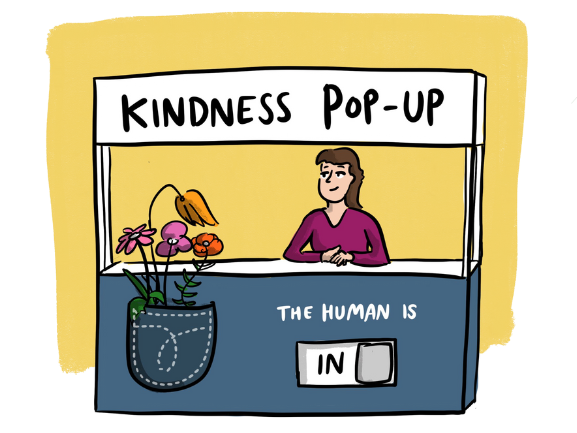Liverpool has the oldest Chinese community in Europe. It’s home to one of the longest established Somali communities in the UK, and the first purpose-built mosque in Britain, dating back to 1889, was in Liverpool.
Part of my institution’s identity is shaped by our relationship with the city of Liverpool and its people. These communities are part of Liverpool’s DNA, and I’m proud that so many people from ethnic minority backgrounds choose to study or work here.
- What I learned about South Asian women when we built a space for them
- What matters to students’ sense of belonging?
- Student support takes a village – but you need to create one first
As a person of colour, it is important to me that when students and staff walk through our doors, they feel part of our community. People should wake up in the morning looking forward to being here, knowing that they belong and that they don’t have to spend their energy worrying about their race, gender, disability, background or circumstances when they arrive on our campus.
I’m grateful too that we have a leadership team that doesn’t just talk about inclusion but truly believes in it and, together, we are working to create a culture where everyone feels valued.
When I think about my work, the word that springs to mind is “belonging”. Diversity and inclusion are deeply personal. Coming from a minority background, I have seen and experienced what discrimination looks like. That lived reality is my motivation for wanting to ensure that others don’t have to go through the same experience when they come to work or study at my university, and to ensure projects such as the Diversity & Inclusion Fund are a success.
So, what are the Diversity & Inclusion Fund projects?
The Diversity & Inclusion Fund originated from that desire to demonstrate, and not just say, that our university is a place for everyone. We wanted something visible, something that put money and strategy behind our words. This is why one of the key criteria for funding is co-creation. Every project has to involve staff, students and often the wider community. Inclusion only works when it is built together.
Our co-creation begins with applications being judged by members of the executive leadership team, led by the chair of the institutional inclusivity board and myself as associate director for diversity and inclusion. Successful project leads meet every six to eight weeks to share progress, discuss challenges and receive guidance to maintain momentum. These meetings, co-chaired by me and the inclusivity board chair (a member of the ELT), create a supportive space that helps projects move forward and turn ideas into real impact.
The fund was originally an initiative where staff could apply for funding for projects that challenge inequality, promote representation and embed inclusive practices across the university and beyond. Now, it’s become an integral part of our institutional strategy. We see it as a long-term investment in who we want to be as a university.
What we’ve achieved so far
In the first two rounds, the university supported 19 projects, each with up to £10,000 in funding. I’m proud to say these projects are already shaping our policy and practice.
One such project that stands out for me is the Living to Learn Charter: “Supporting LJMU Students with Life-Limiting Illnesses”. This project set out to create a compassionate framework and personalised support plans for terminally ill students and those who became terminally ill while studying. Although it’s difficult work, it represents everything we want the fund to be – human, with the courage to deal with issues that many might overlook.
Looking to the future
Our third round has just been launched for the 2025/26 academic year, and we hope to support about 10 more projects. Some of the areas of focus include:
- A leadership academy for Black students: a programme designed to empower Black undergraduate students through leadership workshops, culturally tailored well-being sessions, careers support and industry mentoring.
- Inclusive calm and multisensory spaces: a programme to establish new multisensory environments across campus to support neurodivergent students and others experiencing stress, anxiety or sensory overload.
- Promoting understanding and support for neurodiversity students/staff: two initiatives will tackle this, including one which empowers students with lived experience of disability to co-create improvements to LJMU’s assistive technology provision. The other is focusing on creating a neuroinclusive viva process for all postgraduate students.
- Creativity for immigrants and displaced people: a community collaboration to support migrant communities through creative workshops, while also fostering a “culture of welcome” to expand access to higher education, working towards University of Sanctuary status.
- Closing the Black student degree-awarding gap: We have a successful reciprocal mentoring programme, pairing ethnic minority staff and students with senior leaders to share lived experience to assist in making strategic decisions across the institution with regard to race equality. The programme has now been rolled across the Liverpool City Region as example of best practice.
Each project will help us learn, adapt and embed change, not only within the university but also in the city and region we’re proud to serve.
My advice for implementing an initiative like ours:
Make it personal: Inclusion isn’t just about policies, it’s about people.
Involve everyone: Co-creation might not be easy at times but it’s where the most meaningful ideas come from. For example, we recruited three student inclusion consultant interns, who co-designed training workshops for teaching and professional services staff. By centring the student voice, they provided fresh insight that has directly shaped how inclusion is embedded in teaching practice.
Investment is key: Real investment, both financial and strategic, shows we are serious.
Think long-term: Projects need to be embedded, not treated as a one-off that will fade away. Securing buy-in from senior leadership creates accountability and helps ensure initiatives last beyond their initial timescale. For example, our Yes, We See You project welcomed a group of people with learning disabilities into the university through a programme of events. They now attend every Friday for activities, building a sense of belonging and showing that university is a place for them. Who knows – they might be university graduates in the future!
Be brave: You’ll need to confront the toughest issues head-on, as these are often the ones that matter most. We have not shied away from any topic or concern – from tackling menstruation inequalities, providing opportunities for creativity to promote cohesion for South-east Asian communities; engaging with service families and how they can thrive at university; to our Supported Intern project, run with local councils and colleges, which gave young people with SEND life-changing employment opportunities.
We also connect students with pupils with SEND through storytelling workshops, helping both groups share experiences, build empathy and learn together. The impact goes beyond individuals – these projects have shaped our policies on accessibility, inclusive learning design and compassionate support. Put simply: our work is about real impact and when there’s a need, and the passion to drive change, we can make it happen!
Driving forward belonging
What I love most about the Diversity & Inclusion Fund is that it belongs to our students, our staff and our communities. It reflects trust in those closest to the issues to drive forward the solutions.
This, for me, is about more than policy. It’s about creating a university and community where everyone feels seen, valued and part of something bigger. It’s about belonging.
Moni Akinsanya is associate director for diversity and inclusion at Liverpool John Moores University.
Liverpool John Moores University was shortlisted for Outstanding Contribution to Equality, Diversity and Inclusion in the 2025 Times Higher Education Awards. A full list of shortlisted candidates can be found here.
If you would like advice and insight from academics and university staff delivered direct to your inbox each week, sign up for the Campus newsletter.




comment